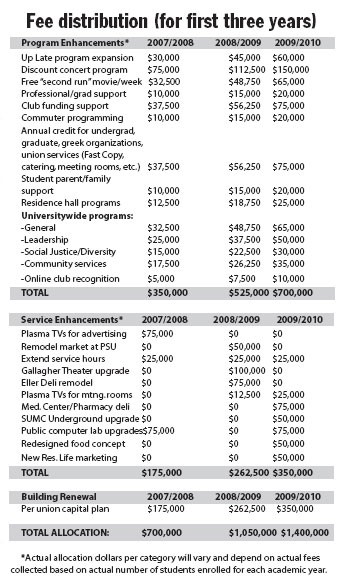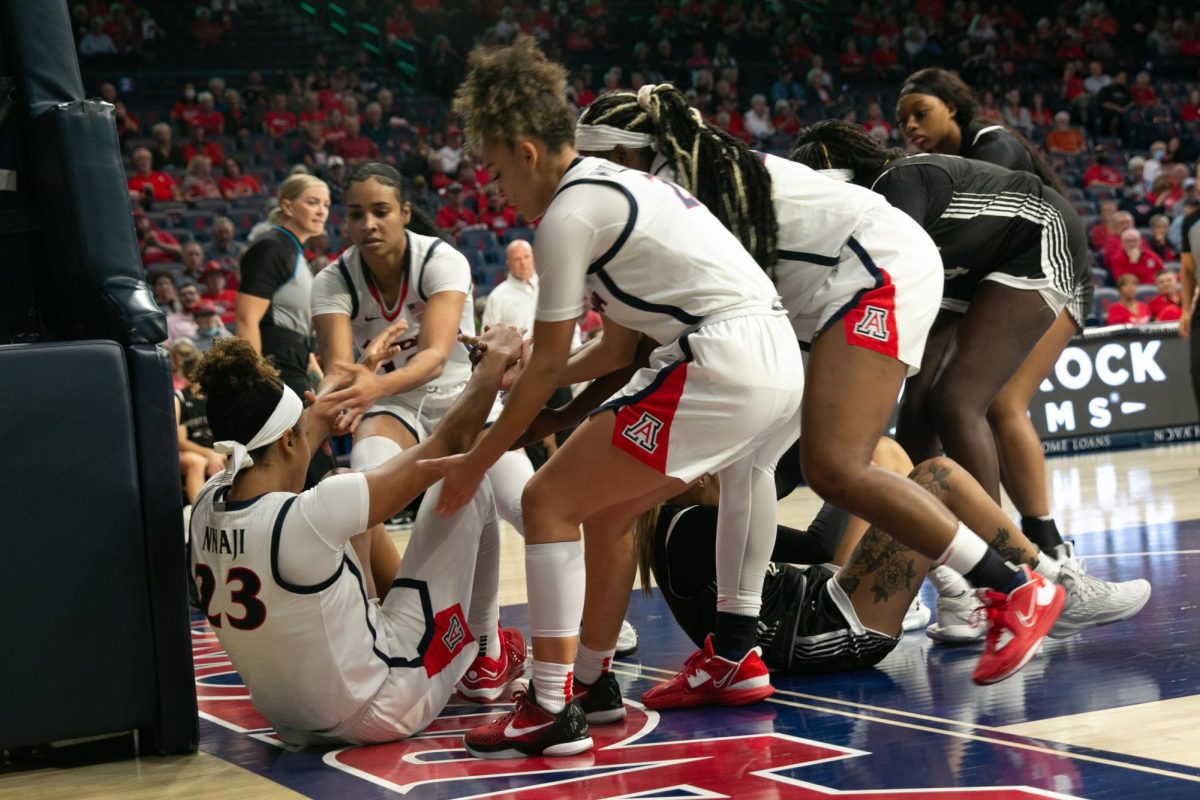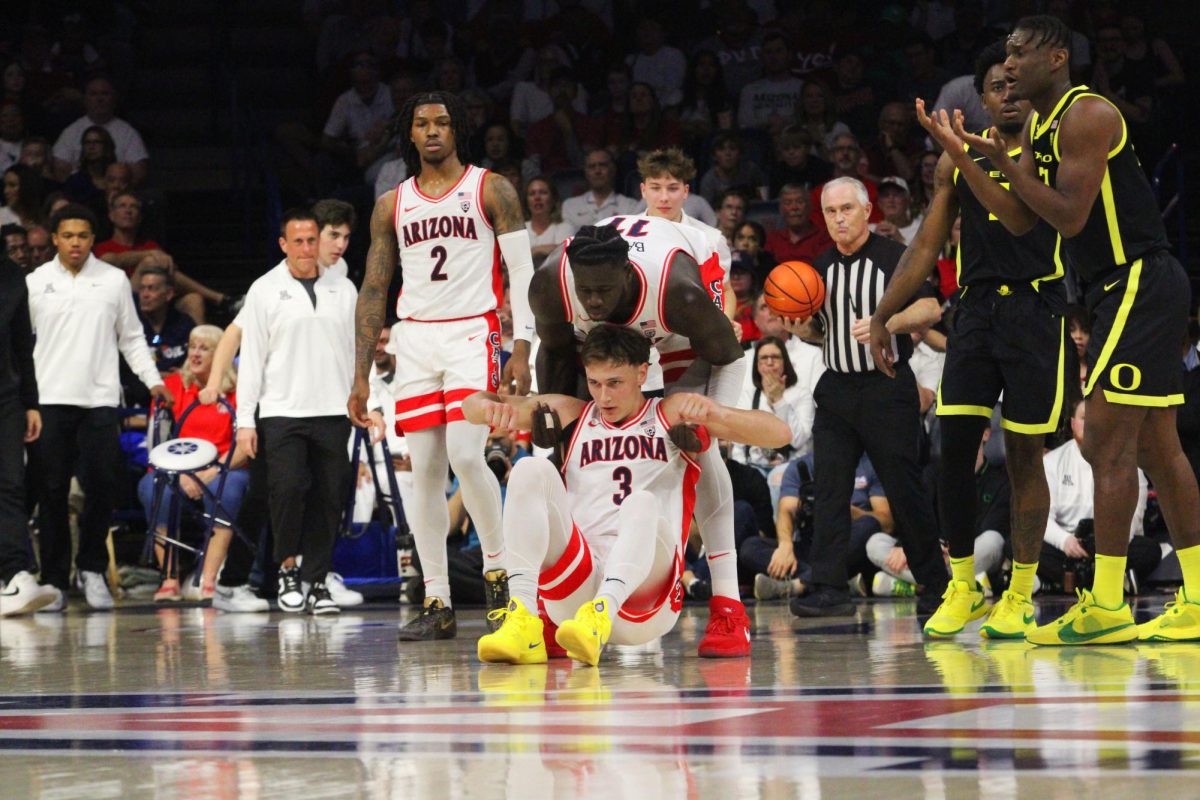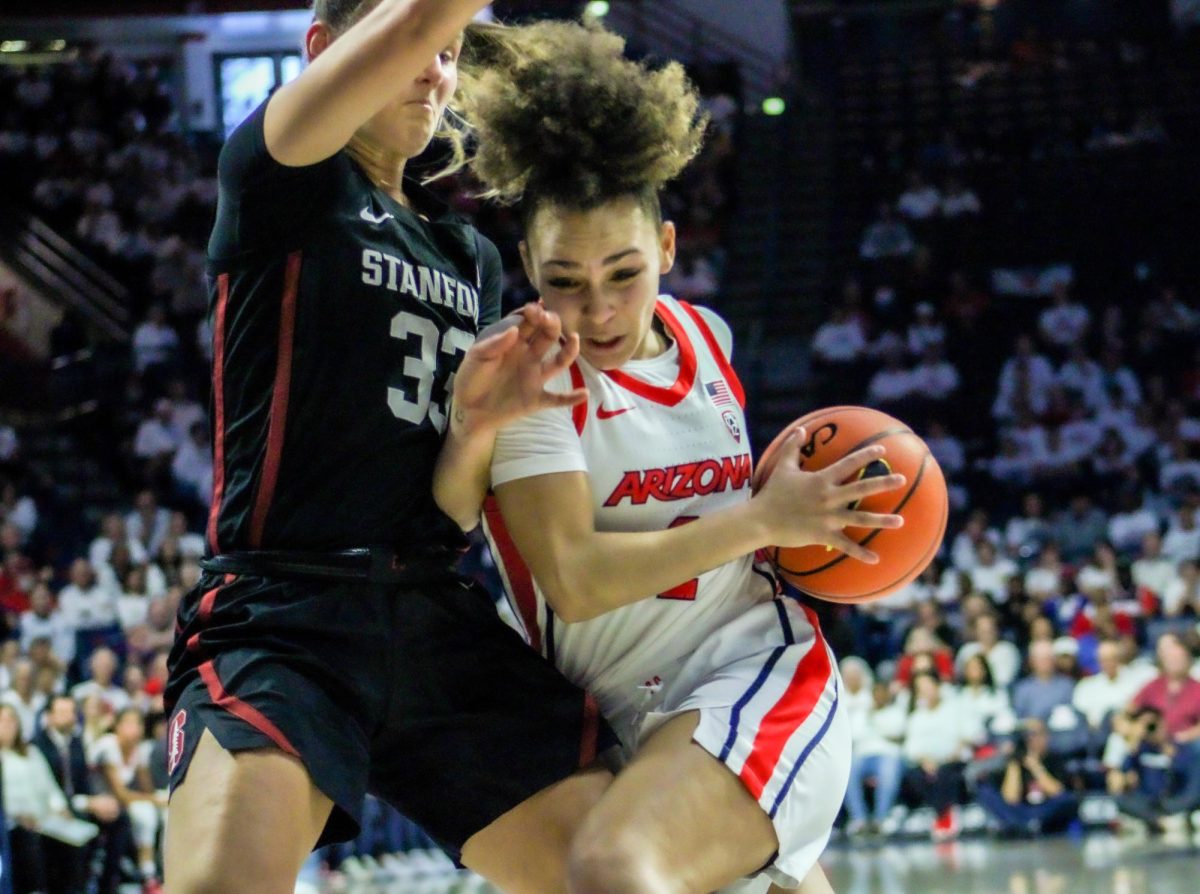Student Union Fee
The Center for Student Involvement and Leadership may have to cut programs and lay off staff members next year if the proposed $40 student union fee does not pass, said the Arizona Student Unions director.
To supplement lost funds used to pay statewide increases in employee and operational expenses, the union is proposing a mandatory fee to maintain student programs, repair and renovate buildings and rebuild its shrinking reserve fund.
If the fee is passed in a special election today and tomorrow, students will pay $20 per year in 2007 and an additional $10 each following year until 2009, when it would reach the maximum $40.
By 2010, the fee would generate $1.4 million, out of which $190,000 will go to CSIL to fund areas like community service initiatives, general programming and club recognition, said union director Dan Adams.
But if students vote down the fee, Adams said a “”handful”” of staff positions and student programs in CSIL, which supports 541 campus clubs, will be eliminated.
“”The center has been undergoing cutbacks for the last five years,”” Adams said. “”We’ve been giving them less and less each year, and if we’re not able to identify a new revenue source, we’re going to have to make cuts in positions and programs at the end of next year.””
The CSIL receives half of its funding from the Arizona Student Unions and has been allotted $500,000 for next year. The center is responsible for fundraising the rest of the budget for a total of more than $1.7 million, Adams said.
Michelle Perez, CSIL director, said their budget enables the programs to “”just get by,”” but does not allow the staff to create new events or hire more staff.
“”We want to do an event to make more students aware about the immigration bill, but we don’t have the money,”” Perez said. “”That’s a shame.””
As expenses continue to rise in future years, the budget CSIL has will not be enough to keep some programs afloat, said Saundra Taylor, vice president of campus life.
“”I think we’re getting to the wire,”” Taylor said. “”We don’t have enough revenue to support the kind of programs we think are critical for student learning and development.””
Taylor said programs that don’t receive much revenue from the unions and primarily stay afloat with fundraising dollars will be the first considered for elimination.
The Blue Chip club, which is a leadership program for the UA’s top students, is one program in need of more funding that Taylor said will be shut down without another revenue source.
Because students have to apply to be a member of Blue Chip, which means the program isn’t open for any student to join, Perez said that program could face not getting funds from CSIL in the future because the funds would first go toward programs available to all students.
The Social Justice Leadership Center, which hosts diversity events and advocates for underrepresented campus groups, is another program experiencing financial woes that could result in its elimination, Adams said.
“”But if the fee passes, we won’t have to do any of these cuts and we’ll be able to offer our students even more,”” Adams said.
Fee advocates say the extra dollars would be used to benefit every student from any discipline, but first-year medical student Alistair Chapman said he is concerned how medical students would benefit the same as an undergraduate.
“”Med school students hardly have time to leave the hospital, so it’s rare if we have time to make it to one of the unions,”” said Chapman, former student body president.
Though Chapman has not taken a stance on the fee, he said it’s unfortunate that one-third of the fee would need to be used for building renewal, citing how those dollars should come from the Legislature.
“”But the burden ends up being on students’ shoulders,”” Chapman said. “”At what point does it stop?””
Taylor said that while it may have been good five or 10 years ago for the UA to not have a student union fee, the time is coming when a fee is necessary to maintain the quality of campus programs.
“”There’s a reality that with low tuition and low state support, this university can’t maintain the quality of its programs without more assistance. Student fees are one way to do that,”” Taylor said.
Another way the unions could save dollars to generate more revenue is by getting rid of the administration service charge of 6.5 percent that every UA auxiliary has to pay, Adams said.
The unions paid more than $1.2 million last year in service charges, which almost reaches the amount that would be generated from a campuswide fee, according to the CSIL expense report.
Initial discussions were held in years past about reducing the service charge, Adams said, but so far there has been no headway about whether that would be a feasible option.
“”It sounds like an easy answer,”” Adams said. “”But in reality, it’s not that easy.””
Dick Roberts, UA budget director, said a service charge is needed because it covers the indirect costs the university takes in from the unions or any other auxiliary.
Indirect costs include how the UA pays for the union’s accounting and payroll, risk management services and purchasing and contract services, Roberts said.
“”The union does not exist in a vacuum on the campus; there are support services that we provide,”” Roberts said. “”We recognize a share of those indirect costs as being billable.””
Though the university could technically get rid of the union’s service charge, Roberts said that would result in money being taken from another area on campus.
“”That means someplace else, the costs that were being covered by that $1.2 million now have to be born from some other source of funds,”” he said.
Another way to raise more revenue would be to establish a mandatory meal plan, said President Peter Likins in an e-mail.
Though the meal plan is off the table for next year, if the fee doesn’t pass and raising product prices isn’t enough to make ends meet, Adams said the next president could bring a mandatory meal plan back to the surface.
“”I personally prefer the student union fee to the mandatory meal plan,”” Likins said. “”But I need to find out how students feel.””
Students can vote today and tomorrow on whether to approve the fee by logging on the ASUA Web site: http://web.asua.arizona.edu/~asua/index.htm









